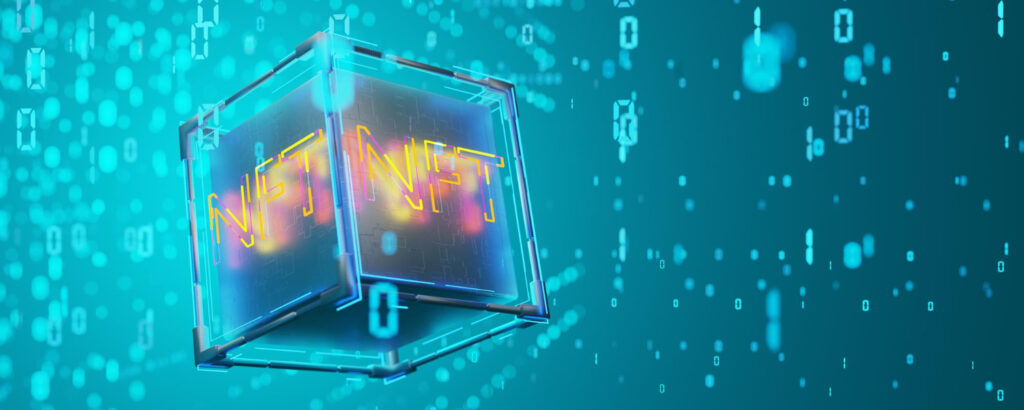NFTs have skyrocketed in recent years. What was once a small segment of the blockchain world has transformed into a large marketplace for digital art, collectibles, virtual real estate, and more. Some NFTs have sold for crazy amounts of money, others just as quickly disappear into thin air. In this rollercoaster of an environment, more and more creators and investors are turning to predictive analytics to try to figure out what’s next for NFT valuations. But can AI really predict the next big things in NFTs?
Below, we dive into how predictive analytics works, which data points matter most in NFT valuations, the AI tools used to interpret those data points, and where the market could be headed in the near future.
Why data-driven insights are important in the NFT market
Simply put, predictive analytics uses historical data and advanced algorithms to identify patterns, anticipate outcomes, and guide decision-making. When applied to NFTs this means collecting and analyzing data such as past sales, social media chatter, and market sentiment to predict how an NFT or an entire category of NFTs will perform in the future.
NFTs have attracted interest from analysts, venture capitalists and even major corporations. While some still reject digital collectibles, others see these tokens as the foundation of Web3. As the market grows, understanding pricing patterns is critical, for creators who want to price their work fairly and for investors who want to find undervalued gems.
Basics of predictive analytics
Predictive analytics relies on several key components:
Data collection: Collecting a wide range of data – NFT transaction data, social media posts, on-chain analytics, etc. – is critical.
Model selection: Different models are suitable for different problems. Whether it’s a time series or a neural network, the choice can make a big difference.
Function technology: This step involves converting raw data into functions. For example, an NFT’s rarity level can be treated as a numerical value or even as a social media sentiment score.
Correlation vs. Cause: It is easy to confuse correlation with causation. For example, a rise in the NFT price may coincide with a tweet from a celebrity, but that doesn’t mean the tweet caused the price to rise.

Data points for NFT valuation models
Data on the chain
One of the biggest selling points of NFTs is transparency. Anyone can view blockchain records for sales history, wallet addresses, and transaction timing. These data points help analysts see demand patterns. If a particular collection gets new wallet holders every week, that could be a sign of upward price momentum.
Social media sentiment
Twitter and Discord are meeting places for NFT enthusiasts. Analyzing mentions, hashtags, and user sentiment can reveal emerging hype cycles or highlight projects with strong communities. AI-powered sentiment tools can scan thousands of messages to see the overall sentiment surrounding a particular NFT project.
Creator or brand reputation
Well-known creators or brands receive more attention on NFT marketplaces. Artists with a history of successful drops or a strong track record in traditional art could see their NFT valuations rise. AI can track past performance data and brand mentions and see how a creator’s reputation correlates with price.
Broader crypto market factors
NFTs do not exist on their own. Crypto markets, especially Ethereum and Solana, can influence NFT values. High gas costs or negative sentiment towards crypto as a whole can deter buyers. Conversely, bullish trends in major coins could spill over and bring new buyers to NFTs.
Time series analysis
Time series models—ARIMA or advanced recurrent neural networks– can be used to predict how the price or trading volume of an NFT will change over days or weeks. They are good at noticing cycles, but have difficulty with sudden changes caused by viral conversations on social media.
Machine Learning Regressions
Linear regression or gradient boosting machine learning models can take multiple inputs (social media mentions, trading volume, etc.) and display a predicted price. The success of these models depends on the quantity and quality of the data.
Neural networks for pattern recognition
Deep learning algorithms can find patterns in large data sets that traditional methods miss. For example, a neural network can spot early changes in sentiment based on the way people talk about a project, rather than just the number of positive or negative words.
Automated dashboards
Nansen or DappRadar offer analytics dashboards that collect blockchain data, track wallet movements, and visualize trending collections. While these tools are powerful, they are only as good as the data and the algorithms they use.

Potential pitfalls and challenges
Data quality and availability
NFTs are recorded on public ledgers, but each marketplace has different standards for data presentation. Inconsistent or incomplete data can mess up AI models. Analysts need to compare sources and possibly combine data from multiple platforms.
Fast moving trends
NFTs can follow meme-driven hype cycles that pop up and disappear within weeks, if not days. AI models trained on older data may miss these rapid changes, especially if they are based on historical patterns that no longer apply.
Market manipulation (Wash Trading)
Some NFT creators or holders can screw up the trade and artificially inflate sales figures to create the illusion of demand. This can easily distort the data in the chain and mislead AI models.
Limitations of the numerical approach
Not everything about NFTs can be reduced to price charts and volume statistics. Community spirit, developer reputation, and even cultural relevance can make a big difference. Relying too much on numbers can miss intangible variables that impact long-term value.
Future perspective
Experts expect the NFT space to grow, but the market could shift from speculation to utility tokens such as gaming assets or membership tokens. As the market evolves, AI will better understand these changes. Meanwhile, the convergence of NFTs, metaverse, and new blockchain protocols will enable new data analytics predictive modeling possibilities.
Additionally, institutional investors will begin to pay attention to NFT analytics and adopt the same data-driven methods as traditional financing. This will result in more mature marketplaces with standard practices and ultimately more reliable predictive analytics.
Final thoughts
While predictive analytics and AI are excellent at finding patterns, they are not infallible. The NFT world is all about innovation, community and viral content – things that can’t be quantified by a series of numbers. But combining the power of AI with human intuition and a sense of the cultural atmosphere of the market can help collectors and makers make better decisions.
As NFTs move out of the hype cycle and into practical use cases, the demand for analytics will grow. Whether you’re an artist looking to price your work fairly or an investor looking for early-stage projects, by keeping an eye on AI-powered insights while recognizing the limitations of machine-based forecasting, you’ll be in best positioned to succeed in this wild and crazy space. .
Editor’s note: This article was written with the help of AI. Edited and fact-checked by Owen Skelton.


